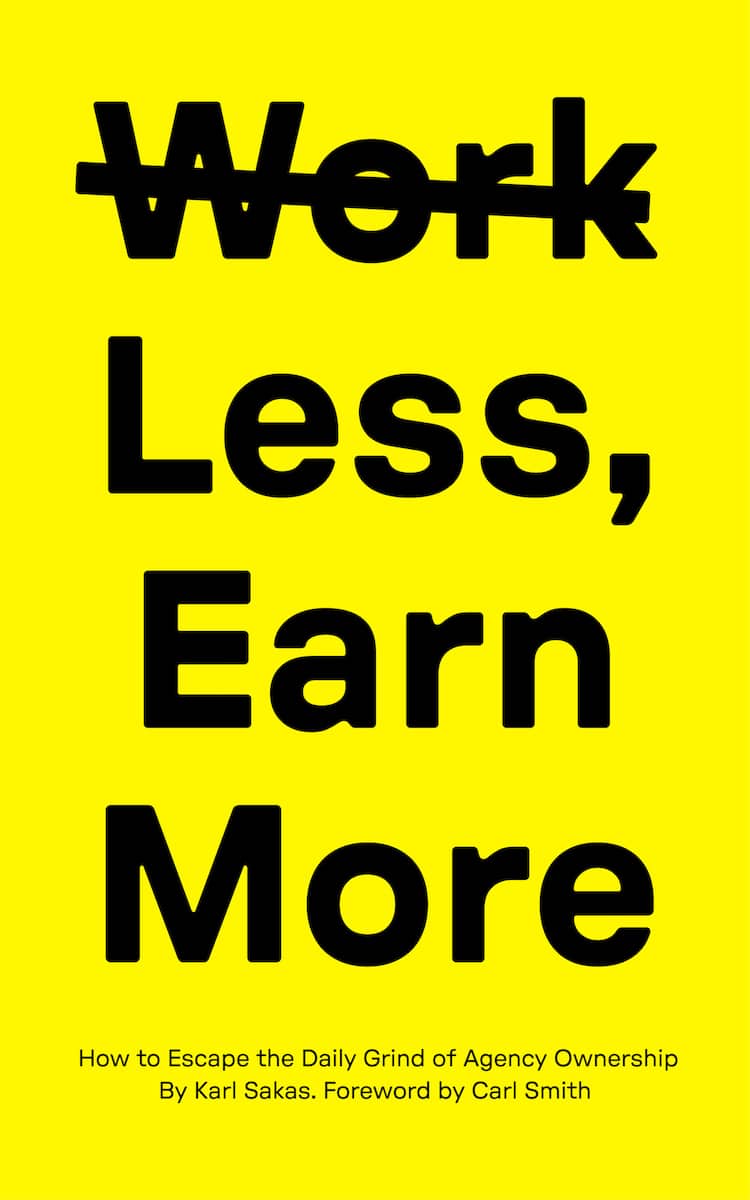What’s your #1 job as the owner of a marketing, web, or creative agency? Don’t go out of business. Your job as president, CEO, or partner isn’t about keeping clients happy—agency client service is about keeping clients profitable (happy, if possible, but profitable first).
Agency Client Service Problem: Saying “yes” to every client request
One of the fastest ways to make your agency go out of business is to say “yes” to every client request—or to let client-mandated timelines drive everything you do—at the cost of agency profitability.
Think about the last time you saw unpaid scope creep at the end of a project. When you calculated hours vs. collections and saw how low your effective hourly rate really was—that hurt, right?
So how do you actually do it? No one likes hearing “no,” so we dread doing it, and put it off, or never do it at all. How do you say “no” (or say “yes” on your own terms) without burning bridges?
The Solution: Say “yes” on your own terms, including saying “no” without burning bridges
My solution? Have phrases in your toolbox to deal with the most common issues. And make sure your agency client service team has the tools, too, so they don’t give away the store.
Think about how your agency’s clients react when you say “yes” vs. “no.” Yes = happy, no = unhappy. The key is to be diplomatic.
Here are three of my favorite examples—feel free to steal these for your agency. Some of these are saying “no” without burning bridges, and others are saying “yes” but on your own terms.
EXAMPLE #1: Client wants to know the exact completion date, before they’ve signed a contract
Situation: You’ve told a new potential client the project will take 10-12 weeks. They haven’t signed the contract yet and they’re pressing to know the exact date the project will be done.
Solution: Don’t tell them a date on the spot. Remind them about the 10-12 week estimate, and note that you’ll get the project into your team’s schedule as soon as they’ve signed the contract and paid the deposit.
You can say, “As soon as we receive the deposit, I’ll add your project to the agenda at our next Monday morning Traffic meeting, and I’ll have an answer to you on Tuesday.'”
Why: Don’t commit to a due date ’til the client commits to the contract. If they take weeks to sign off, all they’re remembering is that you told them it’d be done on X date.
Even if you know the date, don’t tell them something when you feel on-the-spot. Regroup back at the office, and speak with your operations team to understand how the new project fits into your existing projects.
You’re not working a vacuum here—everything is connected, and the more people involved, the longer you really need to finish the project.
EXAMPLE #2: Prospect’s budget is too small for your agency
Situation: A prospective client shares their budget, which is way less than your minimum engagement.
Solution: This is easy, but not everyone does this. Tell them, “Based on the budget you have in mind, we wouldn’t be a good match for you. Here are two other agencies that might be a better match to fit within your budget.”
Why: If you know the client’s not a match, don’t waste your time or theirs. Tell them you’re not a match. Don’t waste your time trying to scope things out. Refer them elsewhere to save time (and build goodwill with the other agencies).
EXAMPLE #3: Client wants a mid-project change that’s a scope change
Situation: Client wants to change how part of the deliverable works, which means more programming time plus additional strategy work to figure out how it’ll fit together.
Solution: Tell them, “The item you requested is a scope change. We’re glad to provide an estimate on it. We’d likely have an estimate within 1-2 weeks. Would you like us to share an estimate on that?”
Why: Don’t do it for for free, and especially don’t do it for free without telling the client they’re getting something for free—you’re devaluing your work and not even getting credit for the accommodation. If there’s a strategically-sound reason for comp’ing it, fine, but tell them they’re getting something for free.
Providing secret free scope changes doesn’t help you. And they’re always more complicated than you think at first.
Finally, asking if they want an estimate does two things:
- First, it makes clear that the thing they requested will cost them more money.
- Second, it saves from doing the estimate if the client says, “Oh, that’s extra? Never mind, having the new XYZ isn’t that important.”
In my past experience doing agency client service as a project manager, I found clients usually agreed to the agency-proposed timeline—or if the client insisted on going faster, we got paid for the extra expense.
Put This Concept to Work at Your Agency
We’ve all been there. It’s tough, I know.
But if you don’t say “no,” your to-do list will grow too big to keep up, and you’ll start letting people down. That’s not a good outcome, especially when your marketing, web, or creative agency depends on providing good service to clients.
When you’re willing to push back, you’ll save time, save money, and reduce your stress levels. It’s worth it. Let me know how it goes for you.
Question: What’s a situation you’ve run into where you weren’t sure how to say “no” without burning bridges?


